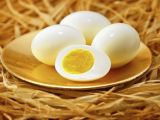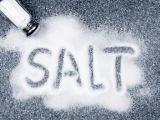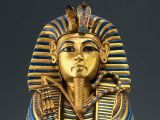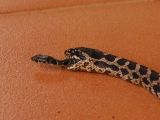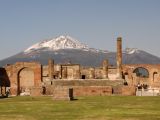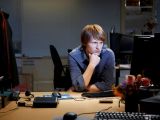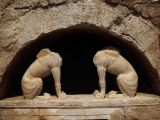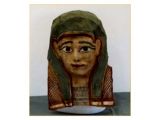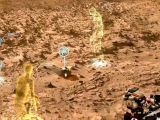It’s been precisely 7 days since our last round-up, which means that, as hard to believe as this might be, we’ve made it through another workweek. It also means that it’s time to once again take a few minutes to review the most important science news and announcements of the past few days.
Just like any other week, the one whose demise we get to celebrate this glorious Sunday was fairly entertaining as far as discoveries go. So, without further ado, here is our latest round-up of the most important news and announcements from the world of science.
10. Chemists found a way to unboil eggs
We’re going to go out on a limb here and assume that you’ve all tasted or at least seen a boiled egg at some point in your life. Otherwise put, you know too well that they’re, well, solid. Some might find this difficult to believe, but as it turns out, scientists now know how to turn them liquid once more.
Apparently, all it takes to unboil eggs is to mix them with a special cocktail of chemical compounds designed to eat away at the protein clumps inside them and break them apart. After this phase is completed, a special machine known as a vortex fluid device finishes the job.
Mind you, the scientists behind this research project did not strain their brains trying to figure out how to unboil eggs just because they had nothing better to do with their time. On the contrary, they say that their method to restore molecular proteins can transform the global biology industry.
9. Salt found to reprogram the brain
It’s common knowledge that eating too much salt can cause people to experience high blood pressure. The thing is that, for quite a while, specialists were not quite sure how and why salt can trigger hypertension if consumed in excess.
According to a new paper, a high salt intake leads to hypertension because, when in excess, this food ingredient reprograms the brain. More precisely, evidence indicates that too much salt causes the brain to be flooded with a hormone known as vasopressin.
Apparently, having too much of this hormone running around inside the brain correlates with a reduced ability to keep blood pressure in check. Now that they know how and why excess salt causes hypertension, scientists hope to find a way to prevent the onset of this condition.
8. The Milky Way might be a giant wormhole
This week, scientists announced that, having carried out a whole lot of complex calculations, they found that the Milky Way might accommodate for a wormhole. As if this were not spooky enough, they say that this wormhole could be the size of the entire galaxy.
For those who are not familiar with science-fiction literature, wormholes are essentially space-time tunnels linking two distinct universes. When you enter a wormhole, you find yourself at certain space and time coordinates. When you exit, you get a whole other set of coordinates to make sense of.
What’s important to keep in mind is that, for the time being at least, scientists have no concrete evidence that wormholes really and truly exist. What this means is that their claim that our home galaxy might be a ginormous space-time tunnel is purely a theoretical one.
7. King Tut’s burial mask damaged during repair work
OK, so this piece of news does not concern a discovery or anything of the sorts. It is, however, a pretty big deal and so earned its spot in this week’s round-up. Long story short, word has it that, while trying to repair it, some guy or gal ended up badly damaging King Tutankhamun’s burial mask.
The 3,300-year-old mask, currently residing at the Egyptian Museum in Cairo, began its latest adventure when somebody accidentally knocked off its beard. Rather than let experts put it back together, a museum employee decided to try and fix it themselves.
The trouble is that they turned to epoxy to attach the lost beard back on the ancient burial mask. Hence, the artifact now has a visible transparent yellow layer standing between the face and the beard. Besides, it sports several scratches around the damaged area.
6. Snake seen crawling out of another snake’s belly
This week, a set of seriously freaky photos hit the public eye and ended up making rounds on the Internet. The photos in question, one of which is included in the gallery below, show a shake working its way out of another snake’s belly.
Apparently, this bizarre incident played out on the island of Corfu in Greece back in 2011 and was witnessed by a man named Dick Mulder and his wife. The man details that the smaller snake only managed to escape the belly of the bigger one because his pet cat took care of killing the predator.
Experts say that, although weird in the extreme, this story might actually be true. The thing is that, in order for the smaller snake to make such a daring escape, the bigger one had to have swallowed it tail first. Besides, the cat must have killed the predator right after its meal.
5. X-rays used to read ancient burnt scrolls
Some 2,000 years ago, Mount Vesuvius erupted and destroyed the towns of Herculaneum and Pompeii in the Gulf of Naples, Italy. In 1752, archaeologists exploring the remains of these ancient settlements came across a burnt library.
From this library, they recovered hundreds of papyrus scrolls that were nearly carbonized when Mount Vesuvius erupted in AD 79. Now, researchers say that, with the help of X-rays, they managed to read some of these long-lost scrolls.
In a report detailing their work, the scientists behind this investigation say that, having compared the texts they read with others, they found that they were written by a scribe who lived sometime in the 1st century and that one was a copy of the works of a poet and philosopher named Philodemus.
4. Sitting accused of putting people in an early grave
In a new paper, researchers show that, whether or not one takes the time to go for a jog or pay a visit to the local gym after their working hours are over, the fact remains that sitting too much while at the office stands to cause them to experience all sorts of health trouble and ultimately kill them.
Otherwise put, it appears that, although useful, exercising does not counteract the negative effects of sitting for prolonged periods of time. Thus, specialists say that those who engage in no physical activities whatsoever for the better part of their day risk diabetes, cancer and heart disease.
In case anyone was wondering, the key to limiting the negative effects sitting can have on the human body is to get up and move as often as possible. More precisely, medical experts recommend that those who are stuck working in an office job take a few steps once every hour or so.
3. Hundreds of human bones found in ancient tomb in Greece
This week, archaeologists announced the recovery of hundreds of human bones from an ancient tomb located not far from the city of Athens in Greece. The tomb, estimated to date back to the 4th century BC, was first believed to hold the remains of Alexander the Great.
As it turns out, the remains of this ancient ruler were not buried in this location. According to the specialists exploring the monument, the skeletons they have so far unearthed belong to a newborn, a woman, two men and an unidentified individual who were all laid to rest together.
Apart from the bones of these people, archaeologists have so far uncovered horse remains, several mosaics, female statues and even sphinxes. It is expected that, when they finally get around to studying the human bones, specialists will manage to identify the people who left them behind.
2. Gospel fragment discovered written on a mummy mask
In ancient times, regular folks in Egypt quite often recycled papyrus scrolls to make mummy masks for themselves and their close one. Interestingly enough, it looks like one such scroll that ended up being turned into a burial artifact had a gospel fragment written on it.
The mummy mask in question is said to have been put together sometime before the year 90. Historians who have until now had the chance to closely inspect it say that the biblical text that is now a part of it is a fragment of the Gospel of Mark.
Provided that specialists were right when estimating the age of the burial mask, this makes the gospel fragment on it one of the oldest religious texts ever. In fact, some say the text might just be the absolute earliest gospel copy thus far unearthed anywhere in the world.
1. NASA and Microsoft teamed up to explore Mars
This week’s absolute coolest news from the world of science is that NASA and Microsoft are now working together on developing a piece of software and accompanying wearable technology that will allow scientists to virtually explore Mars in 3D.
More precisely, NASA and Microsoft brainiacs hope that data thus far collected by rovers exploring the Red Planet will enable them to create 3D simulations of landscapes on Mars. The idea is to then enable researchers to walk around this virtual Martian environment.
The best thing about this project is that, although NASA and Mars scientists are the ones working on developing this technology, the resulting virtual landscapes will be made available to all researchers who want to study the Red Planet’s surface in unprecedented detail.
So, there you have them, the best science news and announcements of the week. Mind you, plenty of other cool discoveries will definitely be made public in the days to come, so be sure to check this page again next Sunday.
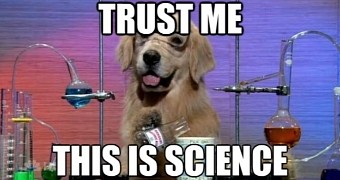
 14 DAY TRIAL //
14 DAY TRIAL // 
